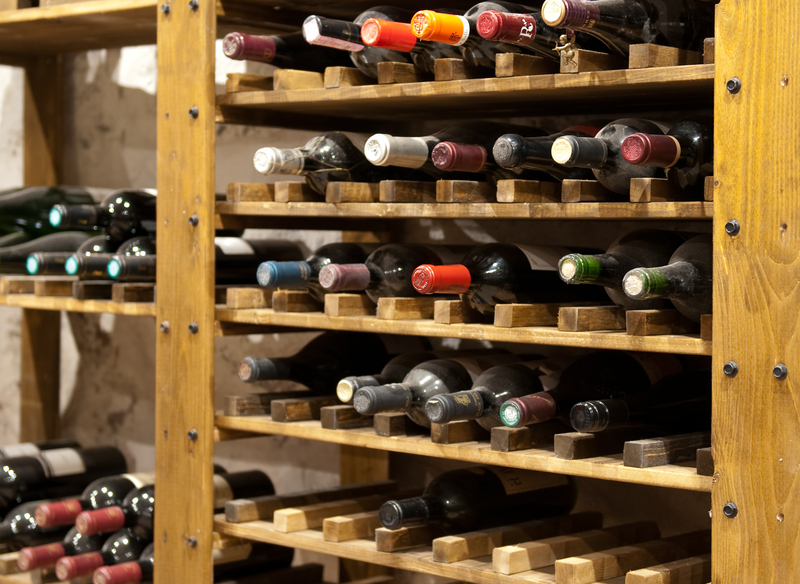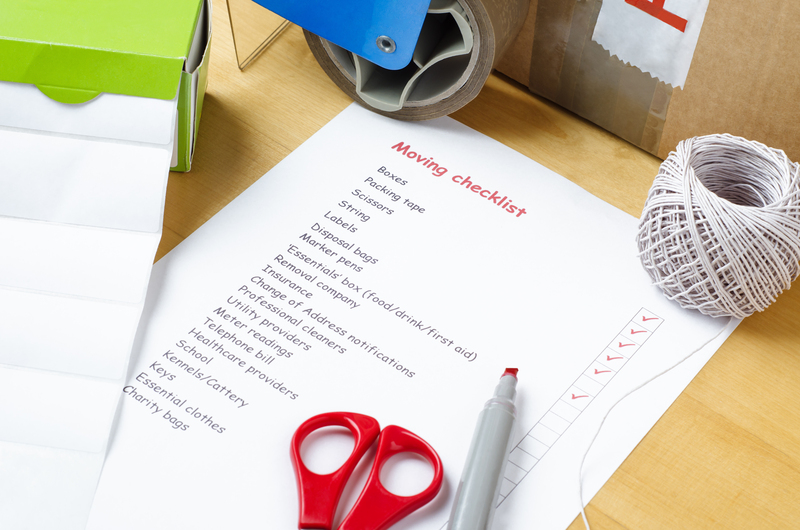Child Safety Risks When Attempting to Move a Piano on Your Own
Children's safety should always be the top priority in any household--especially during physically demanding tasks such as moving heavy furniture. Among the heaviest and most challenging items to relocate is the piano. Whether you have an upright or a grand piano, the process of moving it is fraught with potential hazards. The dangers multiply when parents attempt to move a piano without professional help and children are present. This comprehensive article explores all the child safety risks when attempting to move a piano on your own, and provides valuable advice, best practices, and safety tips to ensure your youngest family members remain protected.
Understanding the Complexity of Moving a Piano
Before delving into child-specific safety risks, it's crucial to understand why piano moving is considered one of the most complex household challenges. This perspective adds urgency to the need for enhanced child safety measures.
- Weight Distribution: Pianos, depending on the type, can weigh anywhere from 300 to more than 1,200 pounds. Their weight is not evenly distributed, making them awkward and hazardous to lift or tilt.
- Delicate Mechanisms: Despite their size, pianos comprise thousands of intricate parts that can be easily damaged if mishandled. Broken or shifted components can create sharp edges or moving parts.
- Size and Shape: Due to their bulk and often compact, narrow moving routes (stairs, corridors, doorways), maneuvering a piano poses significant challenges.
- Risk of Dropping or Tipping: A minor slip or uneven floor can cause a piano to tip or drop, resulting in devastating injuries or property damage.
Given these complexities, it's easy to see why attempting to move a piano without professional expertise considerably increases the risks in your home--particularly for your children.

Major Child Safety Risks When Handling a Piano Move Yourself
Children are innately curious and may not recognize boundaries or dangers during an intense activity like moving a piano. Below are some of the most significant child safety hazards connected to do-it-yourself piano relocation:
1. Crushing and Pinching Injuries
If a piano tips, falls, or shifts unexpectedly during a move, the consequences for a nearby child can be catastrophic.
- Hands and Fingers: Little fingers exploring the piano or trying to help can get crushed between the floor and the piano's weight.
- Feet and Limbs: Children standing nearby are at risk for serious injuries, up to and including broken bones, if the piano is dropped or rolled over their feet.
- Full-Body Harm: Worst-case scenarios involve children being pinned or trapped beneath a falling instrument--a life-threatening emergency.
2. Tripping and Falling Hazards
During a complicated move, obstacles such as moving straps, ramps, and tools are often left on the floor. Children, especially toddlers who love to explore, could trip and fall over:
- Loose pianos parts, such as the bench or casters
- Packing materials, boxes, or blankets
- Dislodged pedals or broken piano components
Falls often result in bruises, head injuries, or more serious trauma, especially when heavy furniture is involved. This is one of the more underappreciated dangers of DIY piano moving.
3. Exposure to Sharp Edges and Moving Parts
While pianos seem solid, moving them can expose various sharp or jagged pieces:
- Scratched wood or chipped keys
- Dislodged screws or broken legs
- Protruding hinges or bolts
Children who touch or play near these sharp surfaces can suffer cuts, splinters, or puncture wounds--often while adults are distracted with the moving task at hand.
4. Unattended Children in Dangerous Areas
When occupied with the intense process of moving a piano without professional help, adults may not notice when a child slips into a hazardous area. Unsupervised children may:
- Attempt to climb or push the piano, increasing the risk of it tipping
- Crawl under or behind the instrument
- Play with moving equipment--dollies, lifts, or straps
Distraction is a major risk factor. Adults can quickly become engrossed, leading to split-second incidents that may have long-term consequences for child health.
5. Risk of Poisoning or Inhalation
During a move, household products such as lubricants, polishes, or adhesive chemicals may be used on the piano or found in the moving area. These substances often have strong odors and can be toxic if inhaled or ingested by children.
6. Noise-Related Issues and Stress
Pianos can emit loud, jarring sounds if dropped, moved abruptly, or if their internal mechanism is impacted. Sudden noises can frighten young children, potentially leading to emotional distress, running (which can result in falls), or hearing problems in rare cases.
The Dangers of Underestimating Professional Piano Movers' Expertise
Many families mistakenly believe that moving a piano is simply a matter of strength and teamwork. In reality, professional piano movers are trained in specific techniques to manage the instrument's:
- Weight distribution
- Safe lifting and carrying
- Proper use of custom equipment (like piano boards, straps, and dollies)
- Securing parts for transportation
Attempting to move a piano without this expertise not only increases risks to the piano itself but puts vulnerable children at serious risk.
How to Protect Children During a DIY Piano Move
Should you choose to move a piano by yourself--despite the risks--it is vital to take extra precautions to minimize child safety hazards. Here are actionable steps and best practices to implement:
1. Plan and Communicate
- Schedule the Move: Arrange the move when children are at school, daycare, or with a responsible adult off-premises.
- Explain the Danger: If children must be home, clearly communicate the risks and set strict boundaries about where they can and cannot be during the process.
2. Isolate the Moving Area
- Use Safety Barriers: Child safety gates or closed doors can block off the moving path entirely.
- Supervise Diligently: Assign a dedicated adult to monitor children, keeping them engaged and far from danger.
3. Prepare and Secure the Environment
- Clear all tripping hazards from the route
- Keep all tools and equipment out of children's reach
- Ensure that chemicals or cleaning agents are stored safely and away from curious hands
4. Use Correct Equipment
- Only use professional-grade moving dollies, straps, and protective gear. Avoid makeshift solutions that can break or slip.
5. Never Leave the Piano Unattended
- Even brief moments with an unsecured piano can lead to disaster if a child wanders over.
6. Immediately Clean Up
- After the move, remove all equipment and debris from the area to prevent post-move accidents.
Why Professional Piano Moving Services Are the Safest Choice for Families
Despite the best-laid plans, in most scenarios the safest, most reliable solution for families with young children is to hire professional piano movers. Here's why:
- Expertise: Trained piano movers understand every nuance involved in safely transporting large instruments--protecting both the piano and your home environment.
- Efficiency: With specialized equipment and practiced technique, the entire move is completed more quickly, reducing exposure to risk.
- Insurance: In the unlikely event of an accident, professional services are insured, covering potential liabilities.
- Less Distraction: With movers handling the task, parents can focus exclusively on supervising and protecting their children.
While cost savings may be motivating, it's critical to weigh these against the potential injury, trauma, or loss associated with a failed DIY piano move. Peace of mind and safety are always worth the investment.
Top Ten Tips to Ensure Child Safety When Moving a Piano at Home
- Do not move the piano when children are in the house, if possible.
- Block off ALL access routes children could use to enter the moving path.
- Enlist a trusted adult to supervise children away from the moving area.
- Store all tools, chemicals, and moving parts far from reach.
- Communicate clearly with everyone involved before the move begins.
- Wear protective footwear and gloves--and never allow children to mimic adult behavior or 'help.'
- Inspect the piano in advance for hazards like loose parts or sharp hinges.
- Keep a first-aid kit close at hand in case of accidents.
- Clean and secure the environment immediately after the move, removing all hazards.
- When in doubt, hire professional piano movers for children's safety.

Emergency Preparedness: What To Do If a Child Gets Hurt
No article about child safety risks when moving heavy furniture would be complete without guidance for emergencies. If an accident does occur:
- Stay Calm: Quickly but calmly assess the situation.
- Call for Help: If a child is pinned or seriously injured, dial emergency services immediately.
- Do Not Move the Child: Unless there is immediate danger of further injury (e.g., the piano is unstable), avoid shifting the injured child until professionals arrive.
- Control Bleeding: Use a clean cloth and pressure to stem any bleeding while awaiting help.
- Monitor for Shock: Look for signs such as clamminess, paleness, or confusion, and keep the child warm and comfortable.
Conclusion: Prioritizing Prevention Over Cost Savings
In summary, the child safety risks of attempting to move a piano on your own are substantial and should not be underestimated. Whether the danger comes from the instrument's massive weight, the tools and environment involved, or the distraction of busy adults, many factors can quickly lead to a crisis. While it may be tempting to save money with a DIY approach, the risk to your family's youngest members far outweighs any potential benefit.
Don't gamble with your child's well-being. When you need to relocate a piano at home, always put safety first--by hiring a professional piano moving service or at the very least, adopting robust child protection strategies. A single oversight during such a complex task can result in injuries with lifelong consequences.
Always remember: Children's safety is everything. Prioritize prevention, plan ahead, and ensure your piano move is free from avoidable risks.
Further Reading:
```


